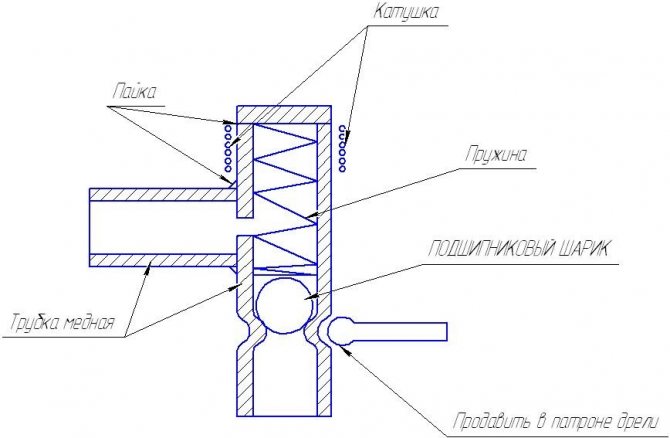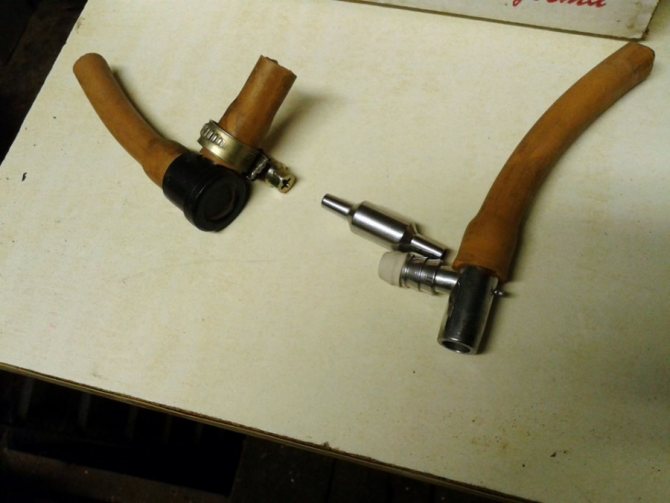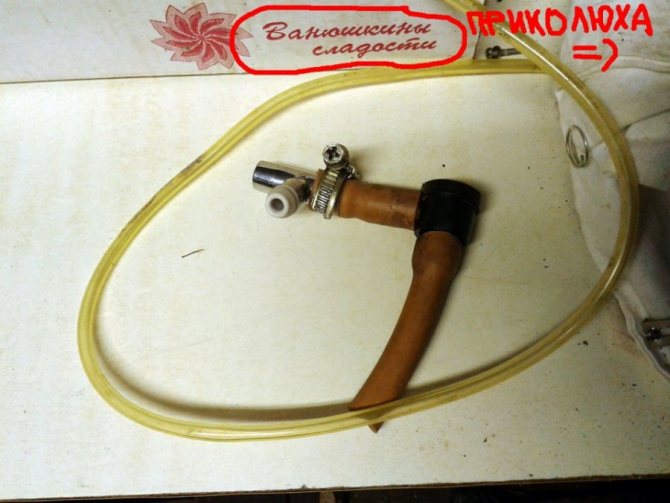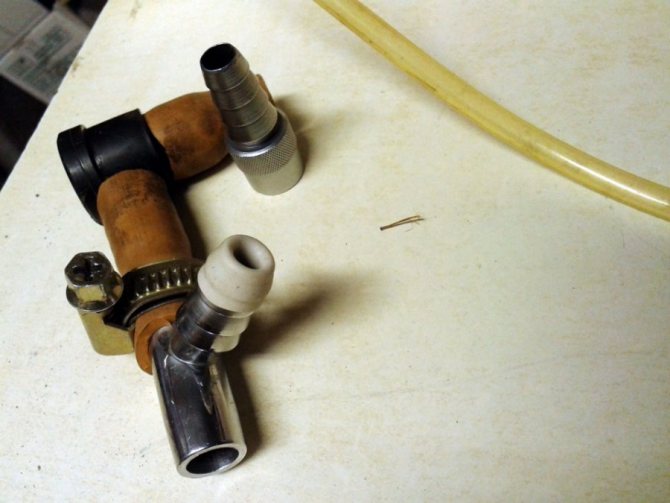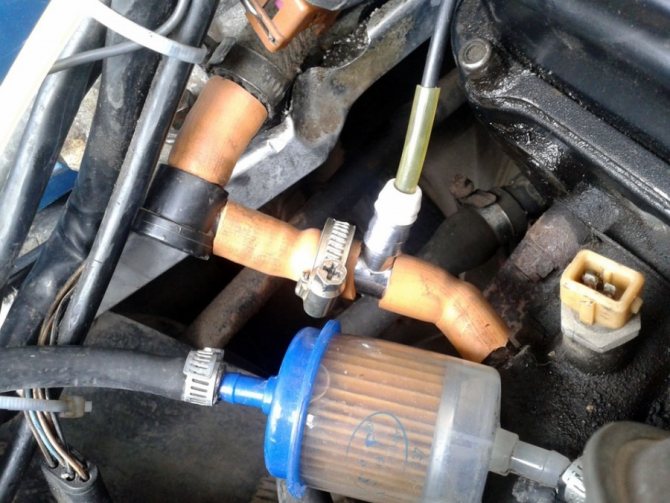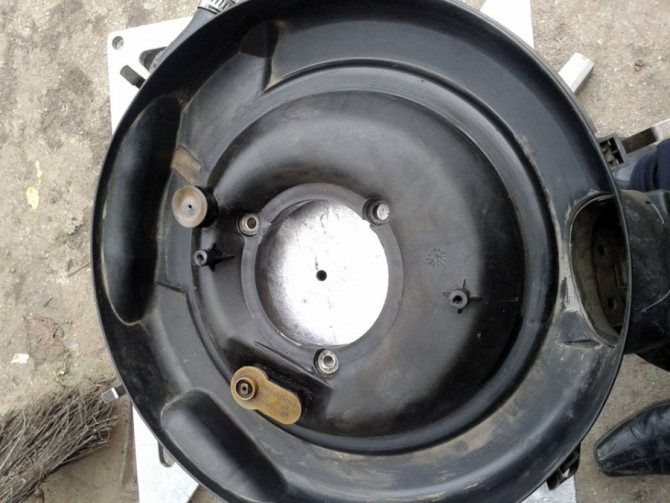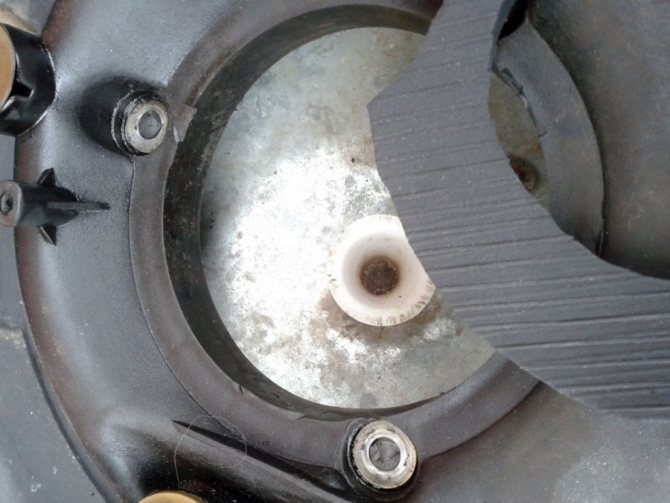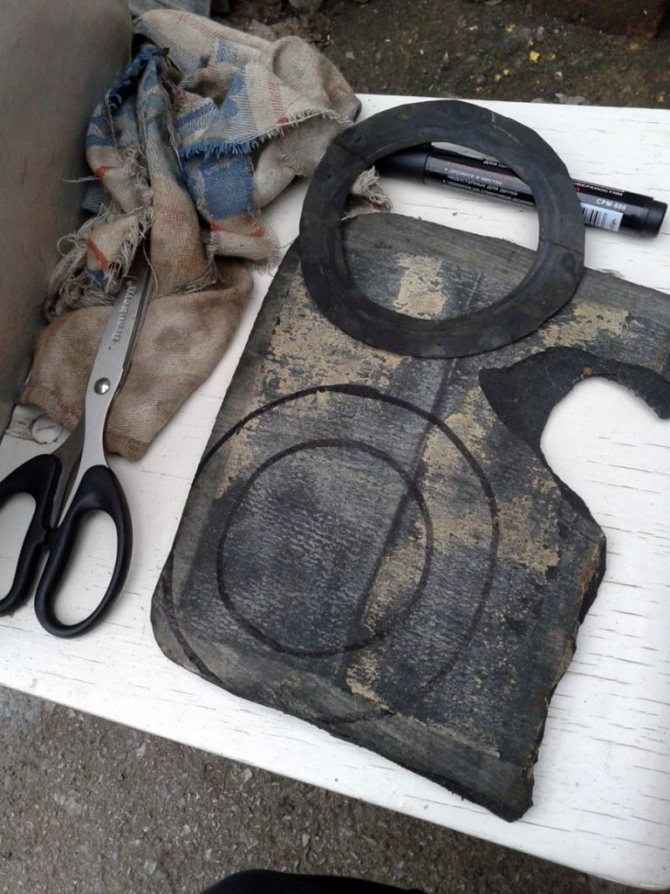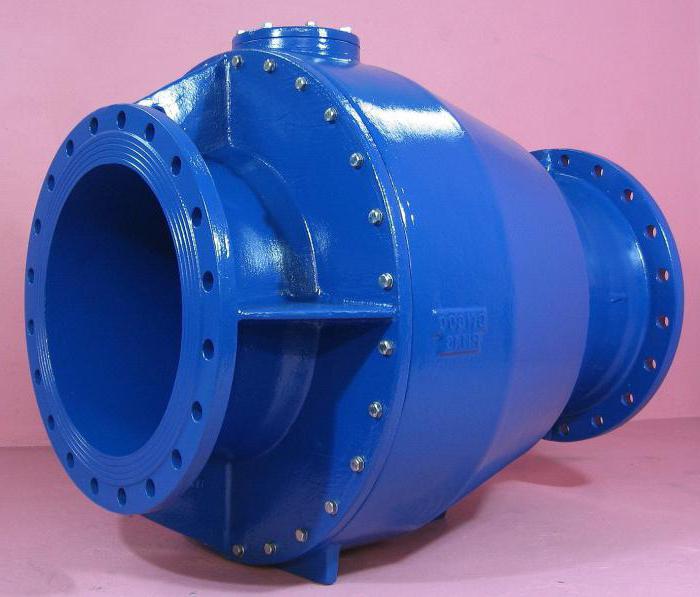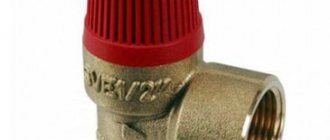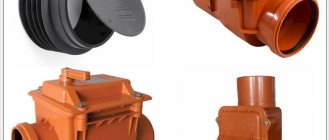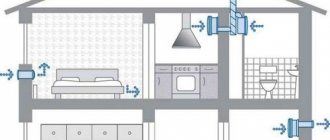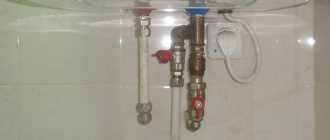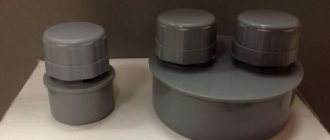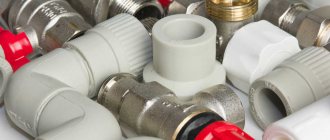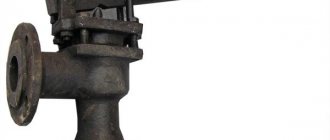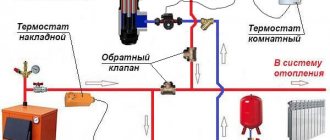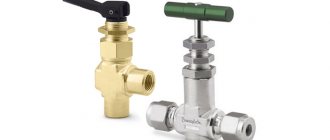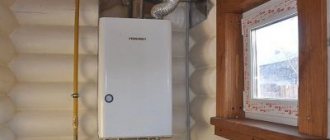The main purpose of the ventilation system is to ensure the flow of fresh air into the room, while simultaneously removing the spent air masses. However, it often happens that the ventilation system does not cope with its direct duty, which is why, instead of clean air, odors from neighboring apartments and the entrance penetrate into the house.
The only solution is to install a non-return valve to ensure proper ventilation. Agree, it is somewhat inappropriate to spend money on the purchase of a structure that you can build yourself. Based on the step-by-step instructions, you can make a check valve for ventilation with your own hands using available tools.
Further in the article, the most common types of check valves will be presented, the features of their installation and the choice of a suitable design for an apartment. Having understood the principle of operation and design features of the check valve, you will be able to independently build a structure and install it.
Check valve working principle
The design of the damper is a protective device to prevent the appearance of a reverse draft of ventilation in the apartment. By allowing the flow of fresh air to flow in the desired direction, the valve inhibits the reverse flow.
The main advantage of the design is its automatic triggering.

The absence of a check valve will not only lead to pollution of the room with exhaust air, dust and insects getting inside, but also lead to drafts.
In ventilation systems, the valve prevents air from entering the common ventilation duct into individual rooms. Such designs work in systems with both natural and mechanical traction.
Such situations may arise due to the appearance of the following problems:
- incorrect installation of the chimney;
- insufficient supply of fresh air to the system;
- installation of forced ventilation in one of the apartments;
- check valve malfunction.
The main structural element of the check valve is the gate. When the valve is correctly installed, the valve should open under airflow pressure in one direction only.
When air moves not from the room, but into it, the shutter automatically closes.
Professional advice
Here are some tips from professional plumbers to consider when installing:
- When installing a check valve on plastic pipes in the pipe cut, all cut points must be carefully cleaned so that no burrs remain. In the future, the burrs left will certainly become a place of accumulation of waste carried away by the drains, and will lead to clogging of the valve.
- To assemble flare connections effortlessly, the end to be inserted should be chamfered.
- Carefully read the instructions for the purchased device to make sure that there are no specific points in its installation procedure.
- At a cost, Russian devices may be several times cheaper than foreign counterparts, while the quality does not differ significantly. But the choice is up to the consumer.
In addition, we recommend watching a video tutorial showing the installation steps of the valve:
A properly installed air valve in the sewer system will improve its operation, avoid pressure surges and the breakthrough of sewer gases into the apartment.In an apartment with an installed valve, there is no risk of unpleasant sewer odors even if the air flow through the central riser is reduced. Just do not forget that the aerator, like any other sewer device, requires periodic inspection and maintenance.
Check valve design features
Check valves are often made in the form of a disc, and they can be of different sizes and cross-sectional configurations.
If necessary, the device can be equipped with heating, but it is only suitable for an electrically driven ventilation system. The main advantage of the heated valve is the prevention of condensation in the system, and therefore ice build-up in the cold season.
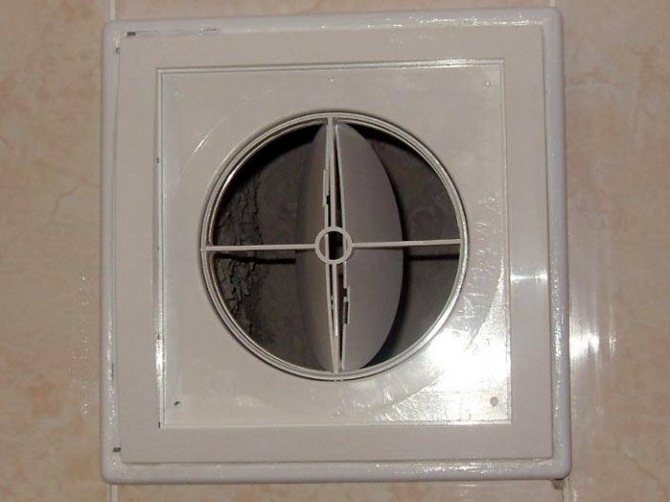

A plastic valve is considered an ideal option for a living space, since, unlike metal, it does not rust under the influence of moisture and does not emit harsh sounds during operation
There are only four main types of check valve designs on the market today. Each of them has its own pros and cons, which should be taken into account when choosing a particular design for your ventilation system.
Option No. 1 - single-leaf design
The design is a damper fixed on a horizontal axis, which, under the influence of the air flow, opens and closes the passage. Thus, the exhaust air is removed to the exhaust part of the system.
In the absence of air movement inside the room or with reverse draft, the valve flap will not open.
The single-leaf valve is most appropriate for natural ventilation of the room, since even a minimal air flow is sufficient to open the valve.
This design, in turn, can be of two types. In the first case, the axis on which the shutter is fixed is mounted with an offset relative to the center of the air channel, and in the other, a counterweight is placed inside and outside.
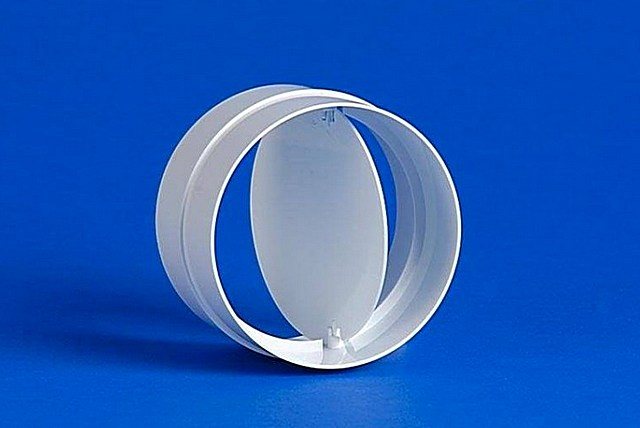

Since the check valve closes by gravity, its efficient operation is directly dependent on perfectly level installation in the system.
It is recommended to use a level when installing vertically or horizontally. If installed incorrectly, the valve will not close tightly, which is why it will not be able to protect the room from reverse draft.
If you install a one-leaf valve near the heating battery, then the air coming from the street will immediately heat up. This will significantly increase the temperature in the room, and therefore reduce heating costs.
Option number 2 - bivalve valve
Due to its principle of operation, such a valve is called “butterfly”. In the center of the round hole there is an axle with two flaps, which are returned to their original position by means of small springs.
Mounting the “butterfly” does not require special preparations, since such a structure can be installed at any angle.
Often, such devices are used in a forced ventilation system with an exhaust hood. When the mechanical hood is turned off, the sash, equipped with springs, return to its original position, tightly blocking the entire section of the channel.
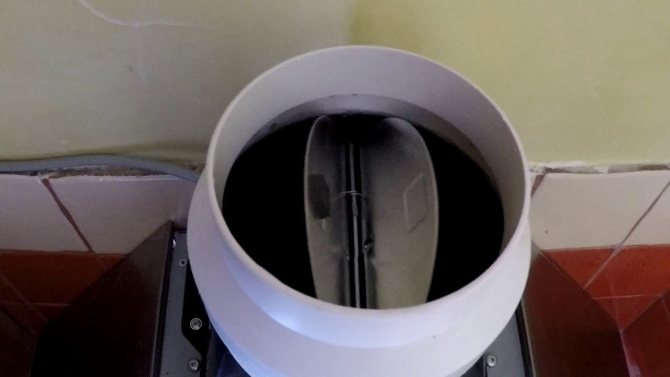

Many modern models of two-leaf structures are equipped with springs that can be independently adjusted depending on the traction force in the system.
The only thing that needs to be done before installing the butterfly valve is to check the sensitivity of the shutters. If the air pressure in the ventilation duct is not enough for such a design, then it is better to choose a different type of valve.
This type of check valve is often installed in buildings with a large ventilation system.
Option number 3 - inertial valve
This type of valve is a special louver that is placed on the ventilation grill. Like the one-leaf valve, the inertial design operates on a gravity basis. The difference between these two designs is only in the number and size of the shutters.
They rise freely, and change their angle depending on the force of air pressure. The blinds are lowered only under their own weight, which is possible only if the fan stops working.
Such a gravity grid is installed with horizontal air movement. Like the butterfly, the inertial valve is mounted only in a forced-type ventilation system.
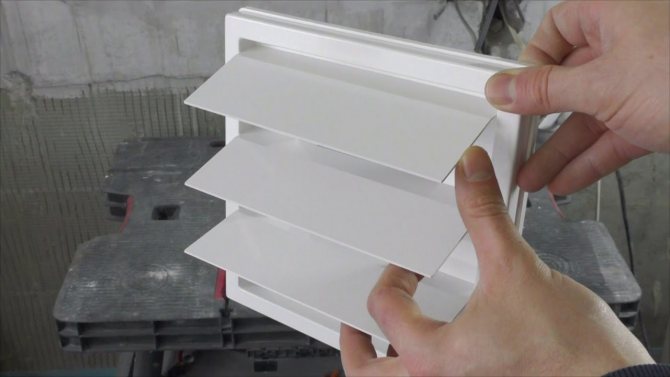

Due to the large number of flaps, inertial valves can be used both inside the dwelling and on the outside of the building.
Basically, the market offers blinds of standard sizes, which fully correspond to the size of the hood and openings for natural ventilation.
If necessary, such an exhaust valve can be built with your own hands, improving the functionality of the device using a spring or membrane.
Option No. 4 - diaphragm valve type
The device is a flexible plate that bends under the influence of air flow. Even a small inflow is enough to open and close the valve, but in this case, much also depends on the correct installation of the structure.
By its principle of operation, the diaphragm valve resembles a "butterfly", but with more modest characteristics.
Before installing the flexible diaphragm, take into account the amount of backdraft in the ventilation duct, since there is a high probability of valve deformation.
In the presence of strong traction, it is better to choose any other type of structure in order to save yourself from additional costs of effort and money. In this case, it all depends on the size of the room and the strength of the air flow.
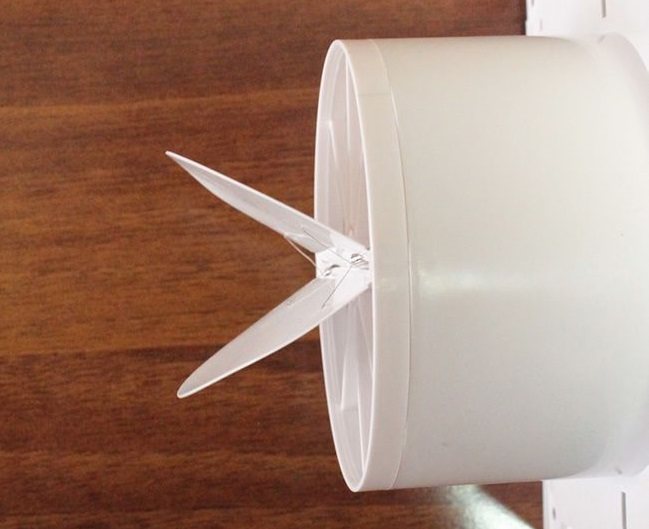

Before purchasing a diaphragm valve, it is important to measure the amount of draft inside the ventilation duct, which can be done by observing the direction of the match flame.
The diaphragm type check valve is ideal for small houses and porches. Unlike the three previous valves, the diaphragm type can be built independently, without the help of a master.
The next section will provide detailed instructions that will help you make a check valve with your own hands.
Types of valves, their structure and purpose
So, a valve is a type of shut-off equipment, which is necessary to regulate various parameters of the working environment: it regulates the flow rate, maintains the required pressure level, mixes the required proportion, and monitors a given level of liquid or gas.
Design
Valve sizes vary from a few millimeters to a meter, and they can be connected to working equipment, device, equipment or product by means of a thread, flange or welding. They are made from materials of various properties: cast iron, bronze, steel or nickel alloys, rubber, teflon, graphite, cotton, etc.
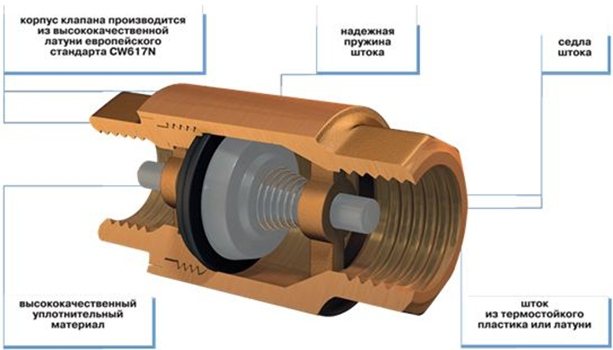

The design of any valve is approximately the same:
- body;
- cover or head;
- saddle;
- damper or shutter;
- spindle or stem;
- flywheel or automatic for moving the spindle.
The principle of operation for the general valve family is as follows. When a liquid or gas enters the body from one side, the head on the stem with a stuffing box seal moves the valve, with the help of which the seat opening either opens or closes, stopping the flow of the working medium or changing the angle of its penetration into the device.
Types and classification
Depending on the design of the damper (gate), it is customary to distinguish between two global valve classes:
- in-line damper - the damper is raised or lowered to open or close the seat;
- butterfly valve - works on the principle of a valve, turning clockwise or counterclockwise, thereby opening or closing the valve.
Instructions on self-construction of the valve
As you already understood, to create a ventilation system with reverse draft protection, it is not at all necessary to buy a ready-made structure. Of course, you can't do without the cost entirely, since you have to buy an exhaust fan. It is he who will become the basis for the check valve.
Before starting work, you should prepare all the necessary tools and materials. So, to build a diaphragm valve, you will need a piece of plastic and a thick plastic wrap. It is also important to immediately prepare the drill, self-tapping screws, rubber pads and glue.
To understand how to properly make a check valve for ventilation with your own hands, it is important to read the following instructions.
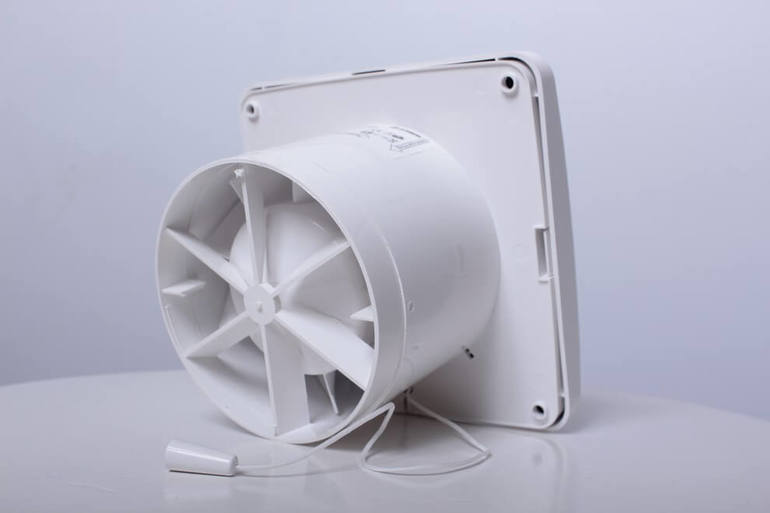

All exhaust fans are manufactured according to already established standards, corresponding to the ventilation duct openings in private and apartment buildings
We cut a plate out of dense plastic strictly according to the shape of the ventilation duct hole. Actually, this will be the basis of the future valve.
Further along the edges we drill several holes for fixing the panel to the wall and fixing the fan. The number of holes can be adjusted independently.
In the center of the plate, we also drill several holes through which the exhaust air will be discharged. You will also have to determine their number yourself, based on your personal needs. The more holes in the center of the plate, the greater the flow capacity of the valve will be.
Next, we fix the hood to the finished base. To begin with, you will need to install a rubber gasket at the connection point, and only after that it will be possible to fix the fan. This will provide the necessary tightness, and therefore improve the quality of the valve.
To avoid annoying noise from the fan during operation, it is recommended to place small pieces of rubber under the device mountings.
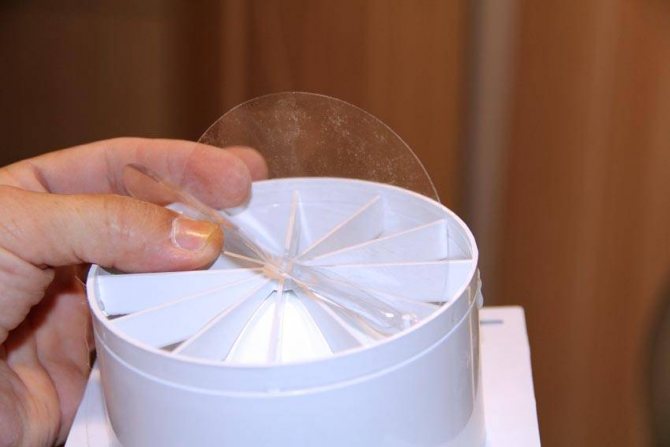

The thickness of the plastic for the construction of the membrane valve should be at least 4-5 mm, so that under the pressure of even a small air flow, the flexible membranes can bend easily
We make flaps for the valve from a thick plastic film. First of all, you need to cut the film to the size of the base, and only then glue it to the base of the valve. Please note that the flaps must completely cover the ventilation openings.
The next step is to cut the flap into two identical parts, while it is important that the cut is as even as possible. In this case, it is recommended to use a utility knife with a sharp blade.
We install the finished valve in the ventilation duct, fixing it on the wall with several self-tapping screws. Since there are gaps between the wall and the valve, it is advisable to get rid of them immediately with the help of a sealant.
This completes the process of creating and installing the diaphragm valve. By consistently performing all of the above actions, you should have a reliable device that protects the room from reverse draft.
Required materials and tools
Installation in plastic drains usually does not require any special tools. The device has a standard socket with a sealing rubber at the end and is simply put on the sewer pipe. For additional reliability of the connection, you can coat the seam with plumbing sealant.
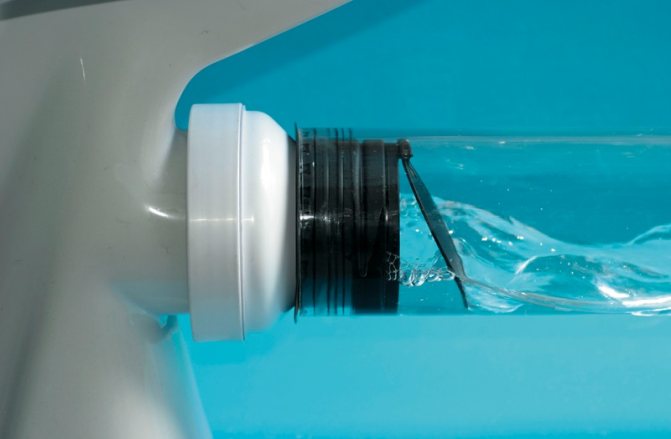

When installing the valve into the gap of the previously assembled section of the plastic sewage system, an additional part will be needed - a compensating pipe. For reliable fixation, a clamp will be needed, which will not allow the compensator to spontaneously move upward when it is backed up by water.
If there is no bell at the intended installation site, you will need to buy another sewer coupling.
Conclusions and useful video on the topic
This video provides step-by-step instructions for self-construction of a membrane valve for ventilation in an apartment:
It is now quite possible to independently build a check valve for ventilation and save on buying a finished product. In this case, it is important to decide in advance on the choice of the type of valve, purchase an exhaust fan and start making a homemade design.
A prerequisite is the preservation of the sequence of steps presented in the instructions above.
If you are already familiar with the process of constructing a check valve, or know an easier way to make a design with minimal financial costs, then please share your experience with our readers.
Leave your comment in the special field under the article, and, if you wish, ask questions to our experts.
